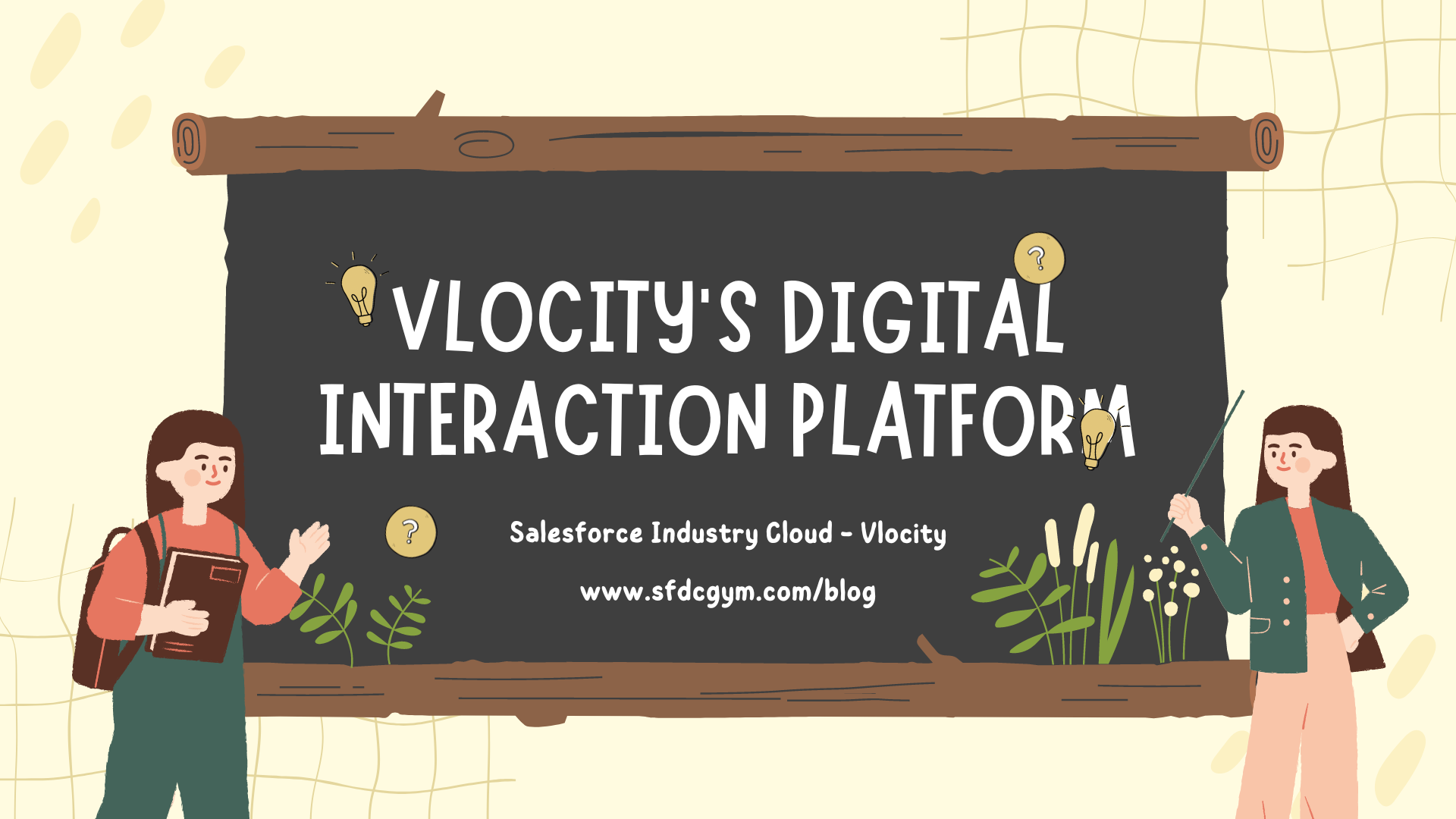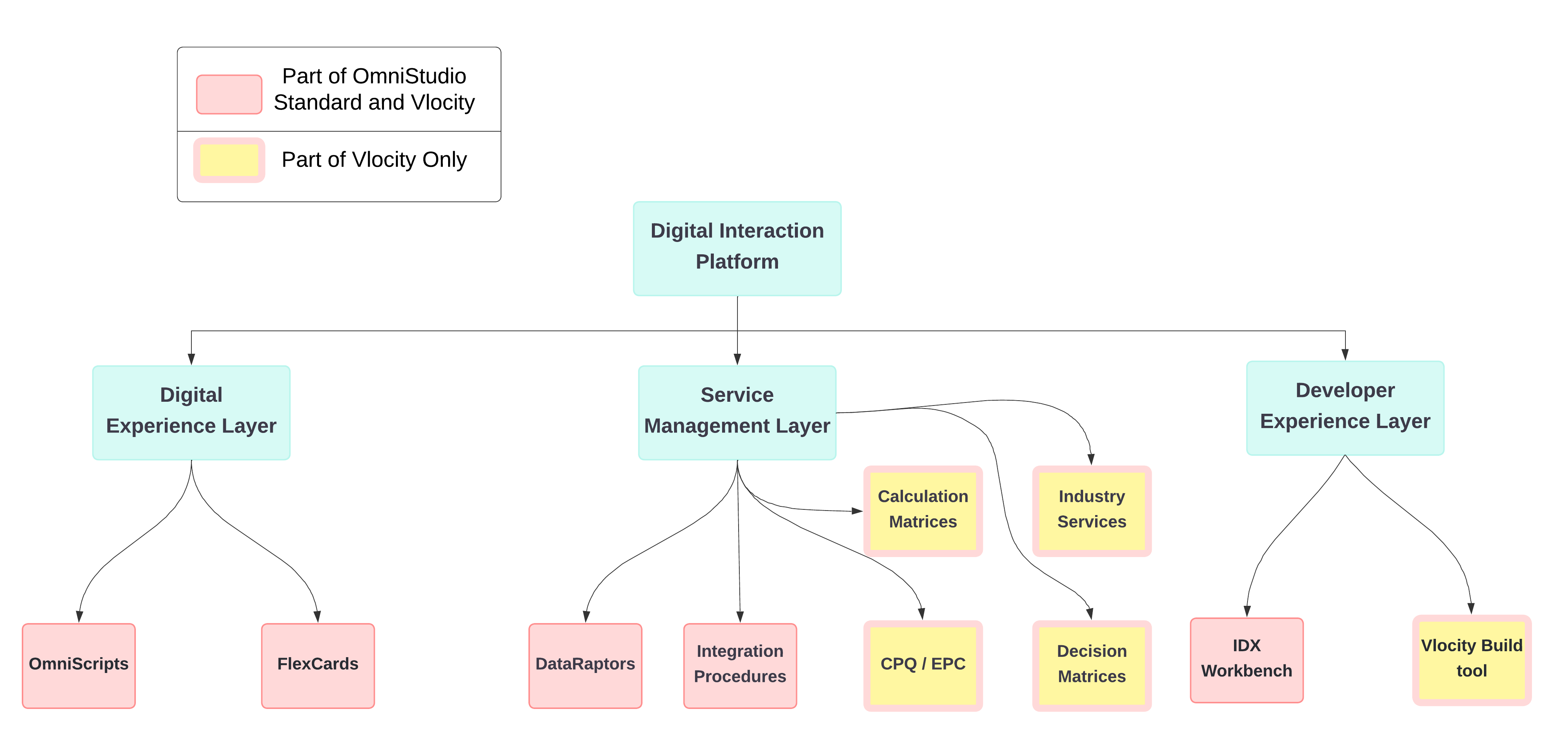Vlocity's Digital Interaction Platform for Salesforce Innovators



Vlocity's Digital Interaction Platform for Salesforce Innovators
In the fast-paced world of technology, Salesforce developers and tech innovators constantly seek tools that streamline processes and enhance user experiences. Enter the Vlocity Digital Interaction Platform—a comprehensive suite designed to transform digital interactions within Salesforce environments. Whether you're a seasoned Salesforce developer or an Omnistudio enthusiast, this platform offers robust features to elevate your solutions.
What is the Digital Interaction Platform?
The Digital Interaction Platform is a powerful ecosystem built into Salesforce, encompassing OmniStudio components like OmniScripts, FlexCards, DataRaptors, and Integration Procedures. These tools integrate seamlessly with Configure, Price, Quote (CPQ) and Vlocity Industry Services, offering tailored solutions for various industries.
For instance, the Public Sector Cloud comes equipped with Permits and Inspections, while the Energy & Utilities Cloud offers Utility Self Service and Clean Energy Program implementations. This pre-built infrastructure empowers developers to customize and deploy solutions rapidly, adapting to specific industry needs without starting from scratch.
Layers of the Digital Interaction Platform
The Digital Interaction Platform is structured into three distinct layers, each serving a unique purpose:

1) Digital Experience Layer
At the forefront of user engagement, the Digital Experience Layer consists of OmniScripts and FlexCards. These components are the face of digital interactions, making complex processes accessible and intuitive for end-users.
- OmniScripts (OS): OmniScripts are revolutionary low-code, visual tools allowing developers to create seamless guided interactions. With its point-and-click interface, OmniScripts enable the creation of complex processes by leading users through a series of screens. The tool's extensive library of UI components supports customizable looks and feels, step charts, and document generation beyond what Salesforce Flows offer. All elements are mapped to JSON, providing developer-friendly data manipulation capabilities.
Advantages of OmniScripts over FlowsOmniScripts outperform traditional Salesforce Flows by offering greater flexibility in UI customization, easier integration with external data sources, and more sophisticated logic handling. This makes them ideal for complex, multi-step processes requiring a high level of customization and integration.
- FlexCards (FC): FlexCards complement OmniScripts by presenting key data insights and actionable information in a visually appealing format. They are used to summarize data fetched from Salesforce or external systems, allowing users to view and interact with essential information at a glance. FlexCards are ideal for creating dashboards, summaries, or quick actions on Salesforce pages.
When to Use OmniScripts and FlexCards?Use OmniScripts when you need to guide users through a step-by-step process involving various data inputs and actions. Opt for FlexCards when the goal is to display aggregated data or provide quick access to actions without a guided process.
2) Service Management Layer
The Service Management Layer acts as the brain of the Digital Interaction Platform, processing complex logic and data operations. This layer includes components such as DataRaptors, Integration Procedures, CPQ/EPC, Calculation Matrices, and Decision Matrices.
- DataRaptors (DR): DataRaptors are essential for transforming and extracting data within Salesforce. They facilitate seamless data manipulation, allowing developers to pull, push, and modify data efficiently to meet specific business requirements.
- Integration Procedures (IP): Integration Procedures are crucial for creating server-side logic that connects different applications and systems. They enable seamless data transfer and process automation, ensuring that external systems communicate effectively with Salesforce.
- CPQ/EPC: CPQ (Configure, Price, Quote) and EPC (Enterprise Product Catalog) streamline the sales process by automating complex pricing and product configurations. These tools are vital for businesses with intricate pricing structures or extensive product catalogs.
- Calculation Matrices: Calculation Matrices are used to perform complex calculations based on predefined rules and logic. They are ideal for scenarios requiring detailed data analysis or decision-making processes.
- Decision Matrices: Decision Matrices provide structured frameworks for making informed decisions based on multiple criteria. They simplify decision-making processes, enhancing efficiency and accuracy.
3) Developer Experience Layer
The Developer Experience Layer focuses on facilitating development and deployment processes. It comprises tools like Vlocity Build Tool and IDX Workbench.
- Vlocity Build Tool:The Vlocity Build Tool aids in automating deployment processes, allowing developers to manage configurations, data packs, and version control seamlessly. It streamlines the deployment of complex solutions across different Salesforce environments.
- IDX Workbench: IDX Workbench provides a graphical interface for managing data packs and configurations, making it easier for developers to track changes and ensure consistency across deployments. It enhances collaboration and efficiency among development teams.
Conclusion
The Vlocity Digital Interaction Platform revolutionizes how Salesforce developers approach complex projects. By leveraging OmniStudio components, OmniScripts, FlexCards, and the Service Management Layer, developers can create tailored solutions for a wide range of industries. The platform's Developer Experience Layer ensures smooth development and deployment, empowering teams to innovate quickly.
For Salesforce developers and tech innovators, mastering the Vlocity Digital Interaction Platform is key to staying ahead in today's competitive landscape. By integrating these powerful tools into your projects, you can deliver exceptional user experiences, streamline operations, and drive business success.
Ready to explore the possibilities? Delve deeper into the world of Vlocity and discover how it can elevate your Salesforce solutions to new heights.
Interview Questions
- Can you explain how the Vlocity Build Tool enhances the deployment process for Salesforce developers?
Ans: Yes, the Vlocity Build Tool enhances the deployment process for Salesforce developers by automating the management of configurations, data packs, and version control. This tool simplifies the deployment of complex solutions across various Salesforce environments by providing a streamlined, efficient workflow. Developers can manage configurations with ease, track changes, and ensure consistency, which reduces errors and saves time. By automating these processes, the Vlocity Build Tool helps developers focus more on creating customized solutions tailored to their business needs, ultimately improving productivity and collaboration. - What are the primary functions of the IDX Workbench within the Vlocity Digital Interaction Platform?
Ans: The IDX Workbench serves several primary functions within the Vlocity Digital Interaction Platform. First, it acts as a comprehensive management tool for data packs, allowing developers to easily create, modify, and deploy these packs across different environments. Additionally, the IDX Workbench facilitates seamless version control, ensuring that all configuration changes are tracked and documented. This helps maintain consistency while also providing rollback capabilities if needed. Moreover, it supports the efficient transfer of metadata and configurations, streamlining the process of environment synchronization and reducing the risk of errors. By offering these functionalities, the IDX Workbench significantly enhances the developer's ability to manage and deploy Salesforce solutions effectively. - Discuss the role of OmniScripts and FlexCards in tailoring user experiences within the Vlocity platform.
Ans: OmniScripts and FlexCards play a crucial role in tailoring user experiences within the Vlocity platform by providing intuitive, guided interactions and dynamic data visualization. OmniScripts is a tool that allows developers to create rich, step-by-step user interactions that are easily configurable and adaptable to various business processes. It enables the creation of dynamic scripts that guide users through complex workflows, helping to ensure consistency and accuracy in data entry and processing. FlexCards, on the other hand, enable the display of complex data in a simplified, user-friendly manner. By leveraging FlexCards, developers can present information from multiple sources in a consolidated view that is both interactive and visually appealing. Together, OmniScripts and FlexCards enhance the user experience by offering personalized and seamless interactions that cater to specific business needs and user preferences within the Vlocity platform.


